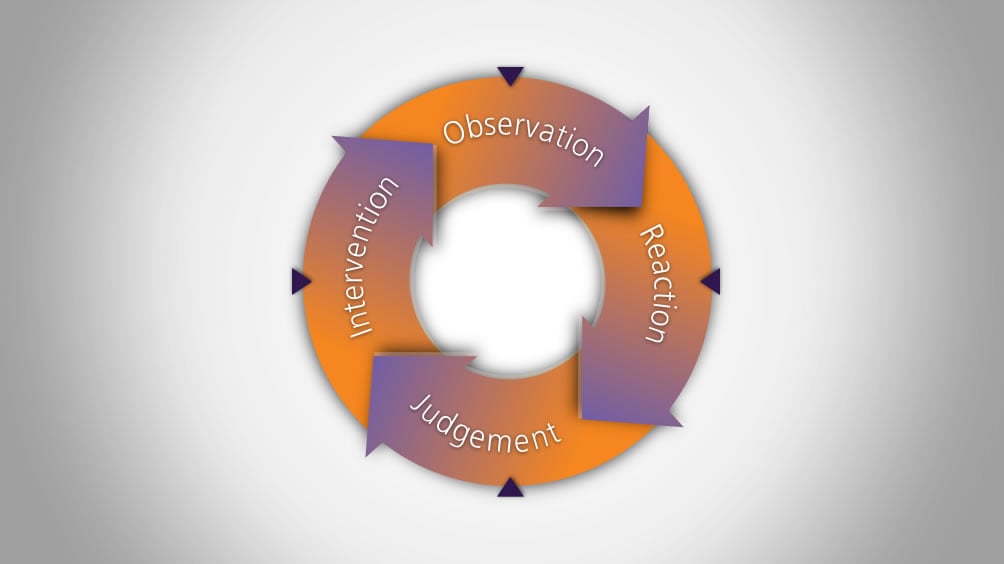Stepping back for a better view
Self-observation is a skill which develops with practice. Many of us are experienced and skilled at ‘reflective practice’, whereby we review and reflect on what we did and how we behaved in retrospect. From this, we can learn about the impact we have, why some things we do are effective and why some things go pear-shaped. What is even more useful as an on-going leadership practice is to self-observe in real-time. This is reflection IN action (in the event), which complements reflection ON action (after the event) (Schon, 1984). The skills of self-observation take practice, but can lead to a more choiceful way of being, behaving and leading, where we are doing less reacting (often directly from instinct) and more responding (combining instinct with conscious choosing)
The ORJI cycle can help you to step back and reflect on what you’re doing before making choices – it is a useful tool to refine self-awareness and develop better in-action decision making. With practice, it can help you to realise in the moment that choices are open to you in how you behave as a leader. At each stage of the cycle, this means being self-aware about how your own response to what is happening is affecting you and your behaviour.

Here are some examples:
- Observation (O) Where am I in what I am observing? … What do I observe about myself – my thoughts, my feelings, my physical response to what is happening?
- Emotional Reaction (R) Where am I in the reaction to what I have observed? … What patterns, habits and assumptions do I particularly have that lead me to react this way?
- Judgement (J) Where am I in the judgement I am forming about what has happened? … What do I know about myself, my habitual decisions and why I am leaning towards certain judgements?
- Intervention (I) Where am I in the intervention I choose to make? … What behaviours am I displaying, whose purpose are they serving and are they creating the type of response I want?